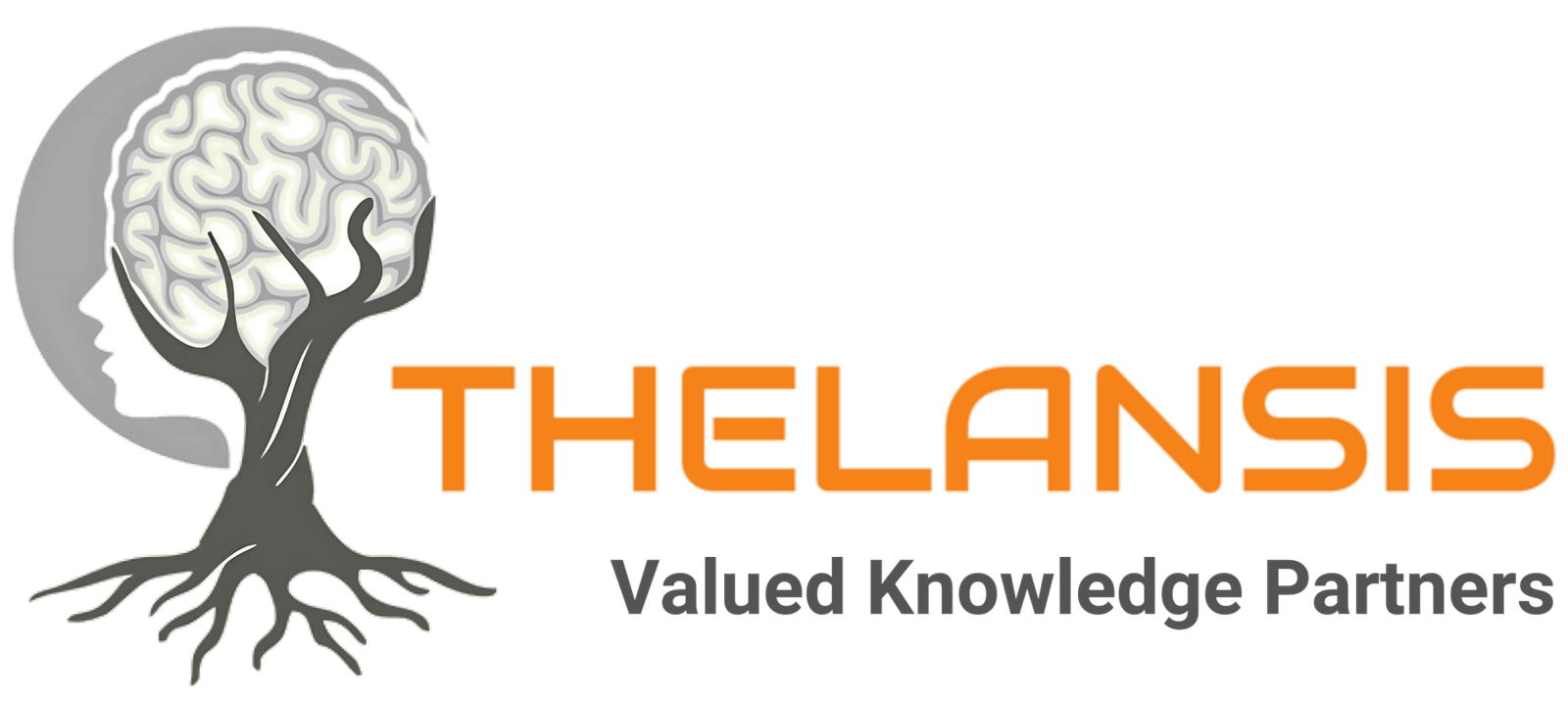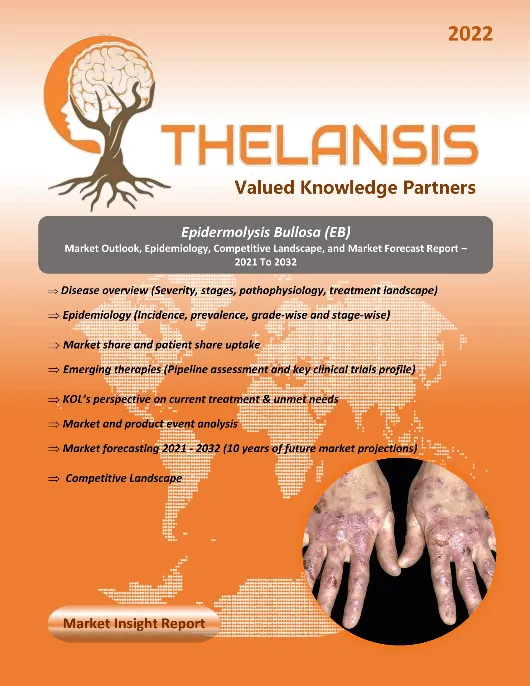Stargardt Disease – Current Treatment Insights Report – 2025
- Published Date : February 20, 2025
- Updated On : September 8, 2025
- Pages : 59
Stargardt Disease Current Treatment Insights
Thelansis’s “Stargardt Disease Current Treatment Insights Report – 2025″ describes the current treatment and management in Stargardt Disease. The analysis includes various current approved and off-label therapies, their respective doses, durations, efficacy, and safety benchmarks. The use of treatments by a line of therapy, including their KOL-perceived advantages and disadvantages, is studied. In addition, an in-depth assessment of patient characteristics, diagnosis, comorbidities and their treatment, treatment switch, polypharmacy, compliance, and persistence is conducted.
Stargardt Disease Overview
Stargardt disease is a rare, inherited macular dystrophy that leads to progressive central vision loss, typically beginning in childhood or adolescence, and is most commonly caused by mutations in the ABCA4 gene. This genetic defect disrupts the normal transport of vitamin A derivatives in photoreceptor cells, resulting in the accumulation of toxic lipofuscin within the retinal pigment epithelium, which damages the macula—the part of the retina responsible for sharp, detailed vision. Patients often report blurred vision, difficulty reading, and increased sensitivity to light, while peripheral vision usually remains preserved. The condition follows an autosomal recessive inheritance pattern and is diagnosed through fundus imaging, optical coherence tomography (OCT), electroretinography, and genetic testing.
Geography coverage:
G8 (United States, EU5 [France, Germany, Italy, Spain, U.K.], Japan, and China)
Insights driven by surveys* with physician specialty(ies) involved in the diagnosis and treatment of patients:
- Survey findings are corroborated and enriched by insights from interviews with leading KOLs
*Survey is customized based on client requirements
Deliverables format:
- PowerPoint presentation
*As per Thelansis’s policy, we ensure that we include all the recent updates before releasing the report content and market model.
Key business questions answered:
- Patient characteristics/patient segments
- Patient diagnosis criteria
- Patient shares for current therapies
- Line of therapy analysis
- Treatment sequencing
- Patient journey
- Compliance and persistency analysis
- Polypharmacy
- Factors impacting physician choice of treatments
- Drivers and barriers to prescribing key brands/treatments
- Physician-perceived advantages and disadvantages of current therapies
- Evolving treatment landscape
- KOL quotes
Stargardt Disease Current Treatment Insights
Thelansis’s “Stargardt Disease Current Treatment Insights Report – 2025″ describes the current treatment and management in Stargardt Disease. The analysis includes various current approved and off-label therapies, their respective doses, durations, efficacy, and safety benchmarks. The use of treatments by a line of therapy, including their KOL-perceived advantages and disadvantages, is studied. In addition, an in-depth assessment of patient characteristics, diagnosis, comorbidities and their treatment, treatment switch, polypharmacy, compliance, and persistence is conducted.
Stargardt Disease Overview
Stargardt disease is a rare, inherited macular dystrophy that leads to progressive central vision loss, typically beginning in childhood or adolescence, and is most commonly caused by mutations in the ABCA4 gene. This genetic defect disrupts the normal transport of vitamin A derivatives in photoreceptor cells, resulting in the accumulation of toxic lipofuscin within the retinal pigment epithelium, which damages the macula—the part of the retina responsible for sharp, detailed vision. Patients often report blurred vision, difficulty reading, and increased sensitivity to light, while peripheral vision usually remains preserved. The condition follows an autosomal recessive inheritance pattern and is diagnosed through fundus imaging, optical coherence tomography (OCT), electroretinography, and genetic testing.
Geography coverage:
G8 (United States, EU5 [France, Germany, Italy, Spain, U.K.], Japan, and China)
Insights driven by surveys* with physician specialty(ies) involved in the diagnosis and treatment of patients:
- Survey findings are corroborated and enriched by insights from interviews with leading KOLs
*Survey is customized based on client requirements
Deliverables format:
- PowerPoint presentation
*As per Thelansis’s policy, we ensure that we include all the recent updates before releasing the report content and market model.
Key business questions answered:
- Patient characteristics/patient segments
- Patient diagnosis criteria
- Patient shares for current therapies
- Line of therapy analysis
- Treatment sequencing
- Patient journey
- Compliance and persistency analysis
- Polypharmacy
- Factors impacting physician choice of treatments
- Drivers and barriers to prescribing key brands/treatments
- Physician-perceived advantages and disadvantages of current therapies
- Evolving treatment landscape
- KOL quotes
1. Key Findings and Analyst Commentary
- Key trends: market snapshots, SWOT analysis, commercial benefits and risk,etc.
2. Disease Context
- Disease definition, classification, etiology and pathophysiology, drug targets,etc.
3. Epidemiology
- Key takeaways
- Incidence / Prevalence
- Diagnosed and Drug-Treated populations
- Comorbidities
- Other relevant patient segments
4. Market Size and Forecast
- Key takeaways
- Market drivers and constraints
- Drug-class specific trends
- Country-specific trends
5. Competitive Landscape
- Current therapies
- Key takeaways
- Dx and Tx journey/algorithm
- Key current therapies – profiles and KOL insights
- Emerging therapies
- Key takeaways
- Notable late-phase emerging therapies – profiles, launch expectations, KOL insights
- Notable early-phase pipeline
6. Unmet Need and TPP Analysis
- Top unmet needs and future attainment by emerging therapies
- TPP analysis and KOL expectations
7. Regulatory and Reimbursement Environments (by country and payer insights)
8. Appendix (e.g., bibliography, methodology)
Table of contents (TOC)
1. Key Findings and Analyst Commentary
- Key trends: market snapshots, SWOT analysis, commercial benefits and risk,etc.
2. Disease Context
- Disease definition, classification, etiology and pathophysiology, drug targets,etc.
3. Epidemiology
- Key takeaways
- Incidence / Prevalence
- Diagnosed and Drug-Treated populations
- Comorbidities
- Other relevant patient segments
4. Market Size and Forecast
- Key takeaways
- Market drivers and constraints
- Drug-class specific trends
- Country-specific trends
5. Competitive Landscape
- Current therapies
- Key takeaways
- Dx and Tx journey/algorithm
- Key current therapies – profiles and KOL insights
- Emerging therapies
- Key takeaways
- Notable late-phase emerging therapies – profiles, launch expectations, KOL insights
- Notable early-phase pipeline
6. Unmet Need and TPP Analysis
- Top unmet needs and future attainment by emerging therapies
- TPP analysis and KOL expectations
7. Regulatory and Reimbursement Environments (by country and payer insights)
8. Appendix (e.g., bibliography, methodology)


